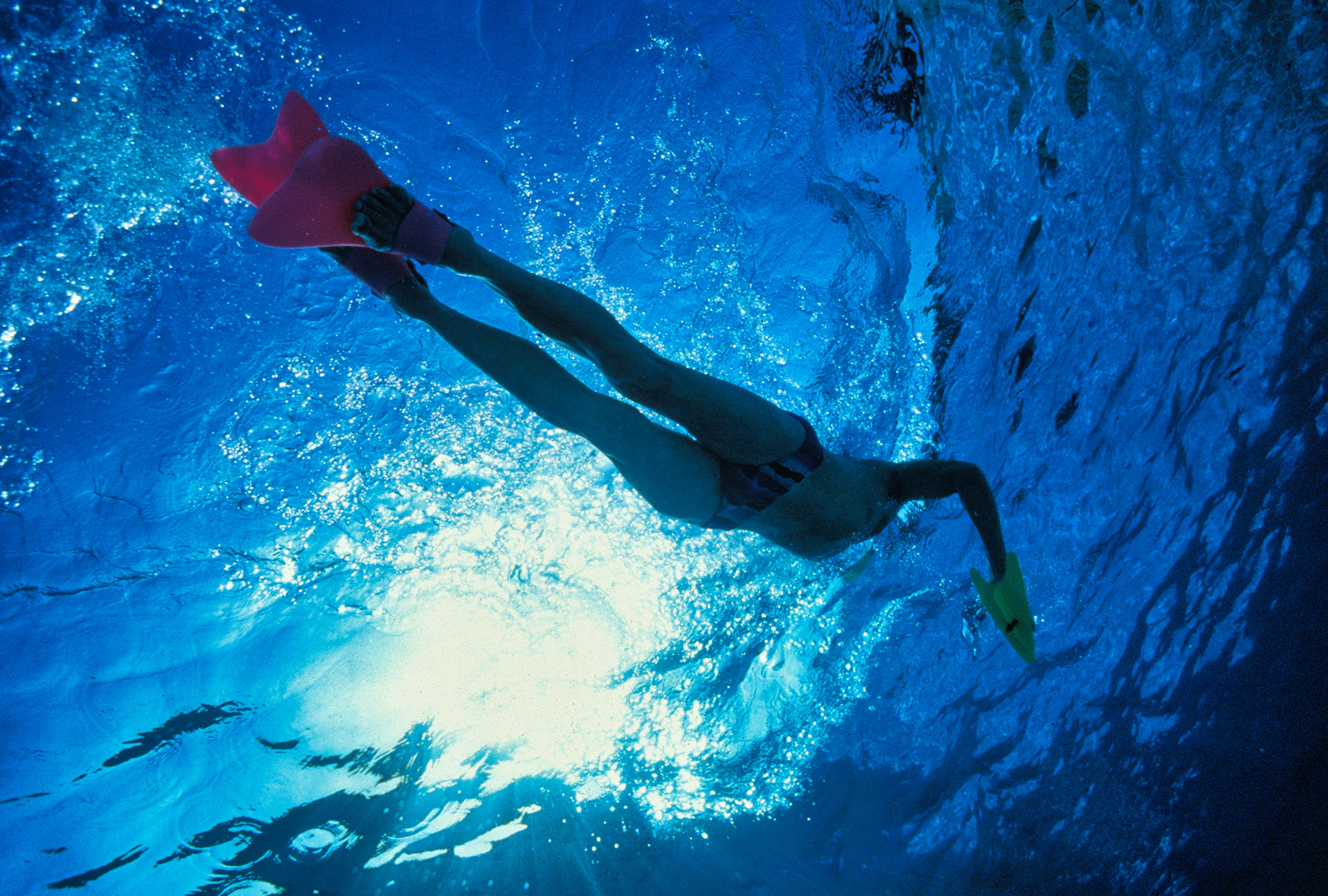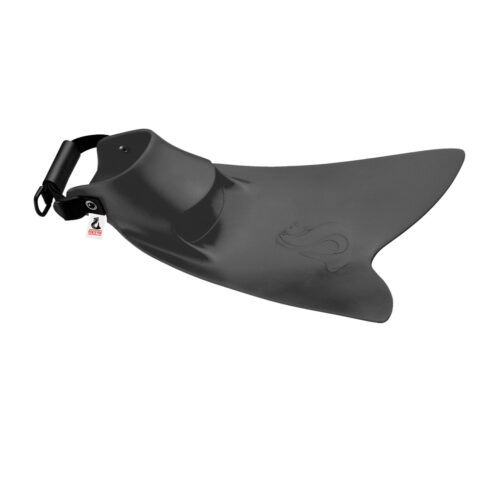
Improve Body Position and Swimming Technique
Fins add extra propulsion to the stroke, which increases a swimmer’s speed through the water. Good swimmers tend to plane on top of the water while poor swimmers tend to drag their legs and swim in a more vertical position slowing them down. One of the goals of swimming faster with fins is to swim faster when the fins are taken off!
By transferring the feeling of swimming faster and higher with fins to swimming without them, a swimmer makes use of a phenomenon know as neuromuscular patterning. The muscles and the nerves can actually remember the feeling of swimming faster and will try to duplicate the pattern the next time out. The more times the pattern is repeated (swimming faster and higher in the water with fins), the easier it is to duplicate it. The end result: the swimmer’s technique and neuromuscular coordination improves.
We’ve been designing and making improvements to fins for over 25 years, with hundreds of thousands of satisfied customers, and many major product design awards under our belts, we can honestly say that we are the experts in fin design. That’s all we do, and we think our innovative fins are without equal in terms of comfort, efficiency, durability, performance, versatility, and sheer value for your money.
We offer a variety of fins and each as been developed in response to your needs, comments and suggestions. Studying marine animal locomotion and human bio-mechanics, we have researched and designed our fins to take advantage of the laws of nature and physics. Not to mention common sense.
Force Fin Foot Pocket Design
Unlike all other fins, even those with open toe boxes, only FORCE FIN swimming fins are designed to concentrate the force of the blade further back on the foot, using the muscles of the whole leg, not just the lower leg.
Unique Fin Blade Design
Force Fins, Slim Fins do not have flat blades like most other brands. Instead, the blade curves up or away from the bottom of your foot to provide more resistance on the power or downward (during freestyle) phase of the kick. The blade then snaps back to assist on the recovery. This two-stroke cycle does several things for a swimmer:
Have you ever seen a fast-swimming fish with a blunt or squared-off tail? Neither had we. That’s why we patterned our fins after the split-V shape of fish tails that more efficiently channel the water. The other brands of swimming fins still use the cheaper-to-make, straight-across design.
We also noticed that other fins worked like boards tied to your feet; they were stiff and inflexible. Again, we took our cue from nature and physics, and we came up with very flexible fins using innovative materials like polyurethane instead of rubber.
The snap of the blade helps increase kicking tempo keeping correct arms-to-legs coordination intact. There’s no worry about the kick slowing down unnaturally as with all other fins.
The rebound of the blade during the recovery phase helps bring the legs higher in the water (during free-style), raising the lower body to the surface in the desirable high-in-the-water position, where you encounter less drag and can swim faster and more efficiently.
Force Fin swimming fins utilize the body’s strength and put it where it’s needed. The human body is built to have more strength when kicking down (during freestyle), than when kicking up. The downward or power phase of the kick emphasizes the powerful quadriceps muscle group at the front and side of the upper leg. The upward, recovery phase uses the weaker hamstrings at the back of the thigh. While still developing both sets of muscles, our blade design assists — or helps take the load off — the upward recovery phase that uses the weaker muscles, maximizing energy efficiency. Conventional fins make your legs work as hard on the recovery as on the power phase of the cycle, because the flat rigid fins must push aside water to get back into position.
By kicking against a load that provides for a separate power and recovery cycle as opposed to the traditional power-power cycle of other fins, oxygen depletion is reduced, the legs and body work more aerobically and less anaerobically, and swimmers can maintain their workout efforts for longer periods of time. Independent research has shown less lactic acid buildup (lactic acid is the proof of anaerobic activity) and more oxygen absorption with Force Fins. Flat fins bring on symptoms of fatigue and cramping more quickly.
Other fins, flat fins want to go through the water along the path of least resistance, which is sideways! Don’t believe it? Hold a flat, heavy object at the surface of the water, let go and watch what happens. It turns on its edge and heads for the bottom. Or, if it’s light like a sheet of paper, it will zig-zag or “dish” its way down. Neither action is going to help your kicking. With flat fins – even small or cutoff flat fins – a swimmer is constantly fighting all this twisting and torquing, and any effort spent this way is wasted.
“The curves and flexibility of our Force Fin blade design help keep the legs properly oriented for more efficient power, even as they fatigue.”
-
 ORIGINAL FORCE FIN$329.95 – $379.95
ORIGINAL FORCE FIN$329.95 – $379.95 -
 FLOAT TUBE FORCE FIN$359.95 – $389.95
FLOAT TUBE FORCE FIN$359.95 – $389.95 -
 PRO FORCE FIN$369.95 – $389.95
PRO FORCE FIN$369.95 – $389.95 -
 FORCE FIN – ORIGINAL FOR FISHING$329.95 – $379.95
FORCE FIN – ORIGINAL FOR FISHING$329.95 – $379.95
